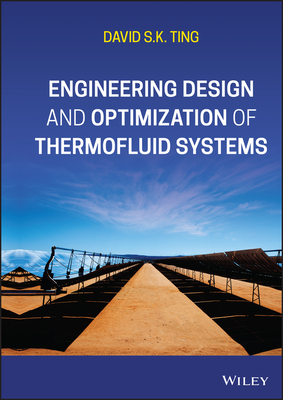Heat Transfer Modeling: An Inductive Approach (Hardcover)
暫譯: 熱傳遞建模:歸納法 접근
George Sidebotham
- 出版商: Springer
- 出版日期: 2015-03-11
- 售價: $4,500
- 貴賓價: 9.5 折 $4,275
- 語言: 英文
- 頁數: 516
- 裝訂: Hardcover
- ISBN: 3319145134
- ISBN-13: 9783319145136
-
相關分類:
熱力學 Thermodynamics
海外代購書籍(需單獨結帳)
買這商品的人也買了...
商品描述
This innovative text emphasizes a "less-is-more" approach to modeling complicated systems such as heat transfer by treating them first as "1-node lumped models" that yield simple closed-form solutions. The author develops numerical techniques for students to obtain more detail, but also trains them to use the techniques only when simpler approaches fail. Covering all essential methods offered in traditional texts, but with a different order, Professor Sidebotham stresses inductive thinking and problem solving as well as a constructive understanding of modern, computer-based practice. Readers learn to develop their own code in the context of the material, rather than just how to use packaged software, offering a deeper, intrinsic grasp behind models of heat transfer. Developed from over twenty-five years of lecture notes to teach students of mechanical and chemical engineering at The Cooper Union for the Advancement of Science and Art, the book is ideal for students and practitioners across engineering disciplines seeking a solid understanding of heat transfer.
This book also:
· Adopts a novel inductive pedagogy where commonly understood examples are introduced early and theory is developed to explain and predict readily recognized phenomena
· Introduces new techniques as needed to address specific problems, in contrast to traditional texts’ use of a deductive approach, where abstract general principles lead to specific examples
· Elucidates readers’ understanding of the "heat transfer takes time" idea―transient analysis applications are introduced first and steady-state methods are shown to be a limiting case of those applications
· Focuses on basic numerical methods rather than analytical methods of solving partial differential equations, largely obsolete in light of modern computer power
· Maximizes readers’ insights to heat transfer modeling by framing theory as an engineering design tool, not as a pure science, as has been done in traditional textbooks
· Integrates practical use of spreadsheets for calculations and provides many tips for their use throughout the text examples
商品描述(中文翻譯)
這本創新的教材強調「少即是多」的方式來建模複雜系統,例如熱傳遞,首先將其視為「1-節點集中模型」,以產生簡單的封閉形式解。作者發展了數值技術,讓學生獲得更多細節,但也訓練他們僅在簡單方法失敗時才使用這些技術。涵蓋傳統教材中所有必要的方法,但順序不同,Sidebotham教授強調歸納思維和問題解決,以及對現代計算機基礎實踐的建設性理解。讀者學會在材料的背景下開發自己的程式碼,而不僅僅是如何使用包裝軟體,這提供了對熱傳遞模型更深層次的內在理解。這本書是基於超過二十五年的講義,旨在教導庫珀聯盟科學與藝術學院的機械和化學工程學生,對於尋求對熱傳遞有堅實理解的工程學科學生和從業者來說,這本書是理想的選擇。
這本書還:
· 採用新穎的歸納教學法,早期引入普遍理解的例子,並發展理論以解釋和預測易於識別的現象
· 根據需要引入新技術以解決特定問題,與傳統教材使用的演繹方法形成對比,後者是從抽象的一般原則推導出具體例子
· 闡明讀者對「熱傳遞需要時間」這一概念的理解——首先介紹瞬態分析應用,並顯示穩態方法是這些應用的限制情況
· 專注於基本數值方法,而非解決偏微分方程的解析方法,因為在現代計算機能力的背景下,後者已大多過時
· 通過將理論框架視為工程設計工具,而非純科學,來最大化讀者對熱傳遞建模的洞察,這與傳統教科書的做法不同
· 整合電子表格的實際使用進行計算,並在文本示例中提供許多使用提示












